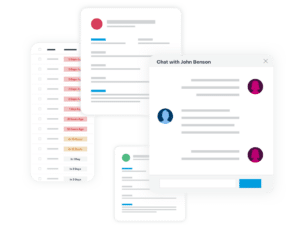How CIOs Shape Customer Experience (CX)
Digital technologies have gained a significant role in today’s customer experience initiatives. To meet new rising demands, the chief information officers (CIOs)—the technology leaders driving digital transformation—must become integral players in enabling organizations to win hearts and minds in this era of customer-centricity.
Former CIO of Dell Computer Jerry Gregoire prophesied the future of the CIO back in 1999, hence his famous quote, “The customer experience is the next competitive battleground.” At the time, no one could have foreseen technology’s pivotal role in supporting customer experience to grow into the latest form of competitive advantage.
The companies who got a running start in the CIO trend are those in which IT is the business (e.g. Uber or Google and smaller equivalents), as opposed to more traditional companies in which IT supports the business. To succeed, the latter need to realize that they have to operate like the former.
CIOs have been laying the foundation for digital transformation for years, and now they need to lean in on digital-first strategies for winning customer experience. So much so, they may even be shapeshifting into the role of Chief Customer Officer.
The CIO Shift Key Drivers
Traditionally, the CIO role has been seen as a back-office role, in charge of corporate technology and overseeing IT staff. It had very little to do with customer experience. The pandemic accelerated the technology progression and increased dependence on digital and subscription services when interacting with customers, drawing the CIO even closer to their experience.
Customers are happy when they feel recognized, and when you pay attention to their needs. Digital systems are playing an increasingly vital role in achieving this. As a result, CIOs must transition seamlessly to take on a new expanded charter of Chief Customer Officer to help safeguard the brand reputation and loyalty.
A customer-centric CIO will focus on three critical areas to meet these new responsibilities: Ensuring Fit-for-Purpose Systems, Embracing New Technology, and Creating a Unified Customer Journey.
1. Ensure Fit-For-Purpose Systems
Data-driven, high-definition customer experiences (HD-CX) are key to outperforming competitors. So, the CIO’s role is to ensure that your company moves away from outdated systems and keeps ahead of the curve.
Many organizations are still working in silos that slow down their ability to grow and hinder the experience they want to achieve. The CIO must champion the alignment of technology to seamlessly support all sales, marketing, and customer service teams. It’s critical to have all the systems to assist the entire customer journey while disclaiming fragmented, distorted data.
CIOs need to eliminate busy work for employees by letting CRM platforms do the work, ensuring their systems capture data automatically and present it in context to everyone who needs it to serve customers more effectively.
2. Embrace New Technology
Artificial intelligence (AI), voice recognition, and personalization became indispensable to HD-CX, enabling a 360-degree view of the customer. To succeed, the CIO must be an evangelist of these tools to navigate their new customer-focused role.
Even with incomplete CRM data, AI can deliver exceptional predictions because it can tap vast external data sources and surface insights that your company may not even know existed.
These unparalleled predictions allow businesses to make confident decisions and focus on the highest priority activities across marketing, sales, and customer service.
3. Create a Unified Customer Journey
CIOs need to break down the departmental silo mentality to ensure a seamless user experience by organizing people, processes, and data around serving customers.
If your company is struggling with siloed data, an advanced CRM system can bridge the gap automatically and ensure that there are no blind spots. By combining customer data, identifying and filling gaps, all while pairing it with the right technology, CIOs can obtain the intelligence they need to make strategic and tactical decisions.
Setting a solid foundation like this and utilizing in-depth, cross-siloed customer data will enable the CIO to excel in this new aspect of their responsibilities, providing a clear and unified view of the customer without increasing the costs.
The Winning Formula
In today’s dynamic and challenging business environment, CIOs must observe trends and embrace digital-first strategies to stay ahead of the competition to future-proof the business.
Removing the administrative burden placed on teams, adopting technologies that make HD-CX possible, and overcoming data silos are the critical steps in a seamless transition to becoming the Chief Customer Officer.
If you want to learn more about seamlessly leveraging your CRM capabilities to ensure HD-CX, feel free to download our eBook.



